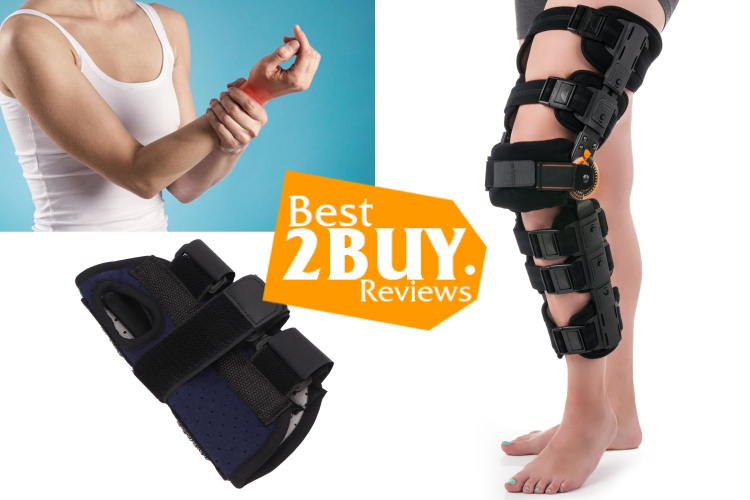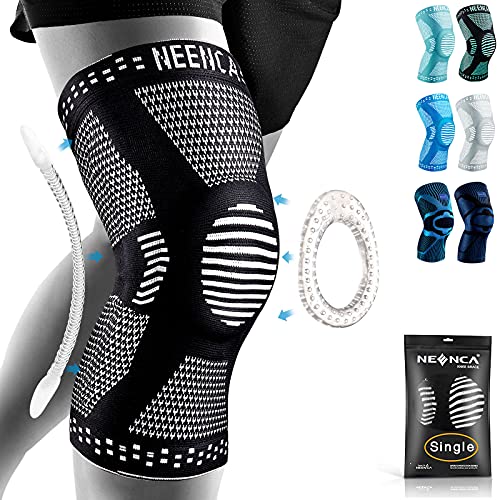How to Choose the Braces & Splints
Braces & Splints: Everything You Need To Know

- 1. Braces & Splints: Everything You Need To Know
- 1.1. What is the Difference Between a Splint and a Brace?
- 1.2. Types of Braces and Splints
- 1.2.1. Knee Braces
- 1.2.2. Ankle Braces
- 1.2.3. Wrist Braces
- 1.2.4. Back Braces
- 1.2.5. Elbow Braces
- 1.2.6. Shoulder Braces
- 1.2.7. Neck Braces
- 1.2.8. Splints
- 1.3. Uses and Benefits
- 1.4. Splint or Brace – Which is Better?
- 1.5. Choosing a Splint or Brace
- 1.6. Considerations and Precautions
- 1.7. Conclusion
Orthopedic devices such as braces and splints are integral in the treatment and recovery of diverse musculoskeletal conditions and injuries. Serving as essential tools, these devices offer crucial support, stability, and protection to injured body parts, facilitating the healing process and improving overall functionality. This article delves into the various categories of braces and splints, their applications, and their significant role in promoting the well-being of individuals grappling with orthopedic concerns.
What is the Difference Between a Splint and a Brace?
The terms "splint" and "brace" are often used interchangeably, but they refer to distinct types of medical devices. It is crucial for healthcare professionals and therapists to discern the dissimilarities between the two in order to provide effective treatment for their patients. The following offers an overview of splints and braces, highlighting their distinct uses and advantages.
Splints and braces find common application in areas like the foot and ankle, knee, hand and wrist, elbow, shoulder, or spine. However, they exhibit key differences in functionality and application.
A splint serves as an orthopedic device designed to immobilize a joint or limb that has sustained an injury. Its primary purpose is to facilitate healing and prevent further damage. Depending on the severity of the injury or condition, splints may be either rigid or soft. Rigid splints are constructed from firm materials like metal or plastic, while soft splints are crafted from foam or fabric.
In contrast, braces are employed to stabilize injured body parts, but they tend to be more flexible than splints. Their design focuses on providing support through compression rather than complete immobilization. Braces are typically composed of softer materials such as neoprene or cotton and feature elements like straps, elastic bands, or metal frames.
Types of Braces and Splints
Knee Braces
Knee braces are essential for those dealing with knee-related issues. They are commonly employed for conditions such as ligament injuries, arthritis, and post-surgical recovery. There are several types of knee braces, including:
- Prophylactic (preventive) braces: Used to prevent injuries during sports or physical activities.
- Functional braces: Provide support to an already injured knee and help stabilize the joint.
- Rehabilitative braces: Aid in the recovery process post-surgery or injury by controlling movement.
- Unloader braces: Specifically designed to alleviate pressure on one side of the knee, often used in cases of osteoarthritis.
Ankle Braces
Ankle braces are crucial in providing support and protection to the ankle joint. Commonly used for sprains, instability, and rehabilitation after injuries, ankle braces come in various forms, including those tailored for specific activities like sports or daily use.
Wrist Braces
Wrist braces offer support for the wrist and are frequently used for conditions such as carpal tunnel syndrome, sprains, and tendonitis. They help stabilize the wrist joint, reduce pain, and alleviate inflammation.
Back Braces
Back braces are designed to support the spine and are used for conditions like herniated discs, scoliosis, and lower back pain. These braces aid in maintaining proper posture and reducing stress on the spine, promoting healing and comfort.
Elbow Braces
Elbow braces are instrumental in managing conditions like tennis elbow, golfer's elbow, and tendonitis. They provide compression and support to the affected area, promoting healing and alleviating pain.
Shoulder Braces
Shoulder braces are specifically designed to stabilize and support the shoulder joint. They are commonly used post-shoulder surgery or to manage conditions like rotator cuff injuries.
Neck Braces
Neck braces, also known as cervical collars, provide support and limit movement in the neck. These are crucial for managing neck injuries, whiplash, and certain medical conditions affecting the cervical spine.
Splints
Splints are rigid devices used to immobilize and protect injured limbs or joints. They are commonly employed for fractures, sprains, and post-surgical recovery. Splints can be prefabricated or custom-made based on the specific needs of the patient, ensuring optimal support and protection.
Uses and Benefits
- Injury Prevention: Braces are often used to prevent injuries during sports or other physical activities. Athletes, especially in high-impact sports, may use braces to protect vulnerable joints from sprains or strains.
- Post-Surgical Support: After orthopedic surgeries, braces and splints are frequently employed to provide stability and protection during the initial stages of recovery.
- Pain Management: Braces can help manage pain associated with various orthopedic conditions by providing support and reducing stress on injured or inflamed areas.
- Rehabilitation: Splints play a crucial role in the rehabilitation process by immobilizing injured limbs or joints, allowing for proper healing.
- Correcting Misalignments: Some braces, such as those used for scoliosis or knee misalignments, help correct and maintain proper alignment of the affected body part.
- Enhancing Functionality: Braces contribute to improved joint stability and function, allowing individuals to engage in daily activities with greater ease.
Splint or Brace – Which is Better?
In general, if complete immobilization is necessary, it is advisable to use a rigid splint. For cases requiring only partial immobilization, a soft splint or brace may be more appropriate. This is because soft splints and braces facilitate daily activities while restricting and managing undesired movement. Moreover, individuals dealing with chronic conditions like arthritis or carpal tunnel might find a brace more advantageous than a rigid splint, as it allows for mobility while still offering stabilization and support.
However, the choice between a splint and a brace ultimately hinges on the specific circumstances. For instance, individuals with carpal tunnel syndrome may still require a rigid splint during acute phases of the condition or for post-operative care following carpal tunnel release surgery.
The selection of the appropriate device depends on the type and severity of the injury being addressed. It is always advisable to seek guidance from a medical professional or healthcare provider when determining the most suitable treatment for a particular injury or condition.
Choosing a Splint or Brace
Although both splints and braces offer stability by immobilizing and supporting specific body parts, they achieve this goal through distinct approaches. The selection of a specific splint or brace is also heavily influenced by individual needs and considerations, including factors like breathability, prevention of footdrop, protection of wounds and skin, and management of pressure.
Comprehending the distinctions between these two devices, along with exploring the available options for each, can empower both you and your healthcare provider to make informed decisions regarding treatment plans. This knowledge aids in finding the most effective solutions tailored to your unique requirements.
Considerations and Precautions
- Proper Fitting: It is essential for braces and splints to be properly fitted to ensure effectiveness and prevent further complications.
- Consultation with Healthcare Professionals: Before using braces or splints, individuals should consult with their healthcare providers to determine the most suitable type and fit for their specific condition.
- Limitation of Use: Braces and splints are supportive measures and should not replace proper medical treatment or rehabilitation exercises prescribed by healthcare professionals.
- Skin Care: Regular skin checks are important to prevent skin irritation or sores caused by prolonged use of braces or splints.
Conclusion
Braces and splints play a crucial role in orthopedics by providing essential support, stability, and protection for individuals dealing with diverse musculoskeletal conditions. Whether the goal is injury prevention, rehabilitation assistance, or pain management, these tools significantly enhance the overall well-being and functionality of individuals facing orthopedic challenges. It is imperative for individuals to collaborate closely with healthcare professionals to ensure the appropriate selection, fitting, and usage of braces and splints, thereby optimizing the outcomes of their orthopedic care journey.









